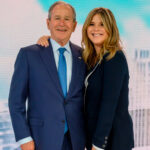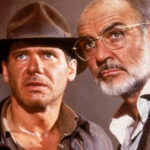

Starbucks is much more than just a coffee shop; it is a cultural icon that has turned the act of drinking coffee into a global experience. Founded in Seattle in 1971, the company quickly became synonymous with high-quality coffee, a cozy environment, and innovations in the beverage industry.
The brand is famous for its customizable drinks, like the Frappuccino, and for its limited-edition cups that have become collector’s items. Additionally, Starbucks has curiosities that few people know, such as the origin of its name, inspired by a character from “Moby Dick,” and the mermaid in its logo, which represents a connection to the sea and exploration.
With over 30,000 stores around the world, Starbucks continues to surprise its customers with new developments and initiatives that go beyond coffee, including sustainability and social responsibility.
1 – EXPANSION IN THE 80s
Starbucks’ global expansion began when Howard Schultz acquired the company in 1987. Schultz, a young man from New York, had joined Starbucks in 1982.
After graduating in Communication in 1975, he started his career as a salesperson at Xerox. Four years later, he took over the U.S. operations of a Swedish company that manufactured coffee machines.
In 1981, his curiosity was piqued by the rapid increase in orders for plastic filters from a company called Starbucks, which led him to visit the headquarters in Seattle.
Upon arrival, he was impressed by the company’s deep knowledge of coffee and the quality of the products it sold, expressing interest in working there. His wish was fulfilled the following year when he was hired as a marketing manager.
At that time, Starbucks only sold coffee beans, not ready-to-drink beverages. However, during a business trip to Milan, Italy, he observed the strong local coffee culture, which not only served high-quality coffee but also acted as social gathering spots on every corner.
Upon returning to the U.S., Howard tried to persuade his superiors to adopt a similar model. To his frustration, they were not very open to the idea but agreed to test the concept in one of the stores.
The experiment was an immediate success; however, the executives refused to expand the model across the chain, arguing that they did not want to venture into the restaurant industry.
The refusal led Howard to leave Starbucks in 1985. However, he did not abandon his dream and began seeking investors willing to provide the necessary capital to open his own coffee shop. The following year, he managed to raise the $400,000 needed to launch Il Giornale. Two years later, Starbucks’ owners decided to sell the chain, and Howard acquired the company for $3.8 million.
In 1987, Starbucks replaced its brown aprons with green ones, marking the beginning of a new phase as a coffeehouse.
The company quickly expanded to Chicago and Vancouver, Canada, and then to California, Washington, D.C., and New York. In 1996, Starbucks crossed the Pacific to open its first store in Japan, followed by expansion into Europe in 1998 and China in 1999.
2 – MORE THAN 30,000 STORES
By 2022, the total number of Starbucks stores around the world reached 35,700. This number also includes other segments owned by the chain, such as Siren Retail and Teavana.
Starbucks maintains its focus on expansion strategies to continue growing. In 2019, the company opened 1,900 new units. Despite the challenges of the pandemic, Starbucks managed to open 130 new stores in the third quarter and 260 in the fourth quarter of the 2020 fiscal year.
3 – LOTS OF CAFFEINE
A large Starbucks coffee contains 330 milligrams of caffeine, which is roughly equivalent to the amount of caffeine in three cans of Red Bull.
4 – HIDDEN SIZES
There are two drink sizes that do not appear on the menu. You can request a “short,” which is an eight-ounce cup, or a “trenta,” which has 31 ounces and is exclusive to iced drinks.
5 – PARTNERSHIP WITH RAY CHARLES
In 2004, Starbucks partnered with Concord Records to co-produce, promote, and distribute an innovative album by Ray Charles titled “Genius Loves Company.” The album won eight Grammy® Awards, including Album of the Year and Record of the Year.
6 – A FARM
Yes, Starbucks has its own coffee farm! Hacienda Alsacia is a 240-hectare property located in Costa Rica, functioning as a coffee-producing farm and also as Starbucks’ global Research and Development center.
7 – VARIOUS APRONS
The aprons worn by Starbucks baristas are one of the brand’s most iconic elements, and each color has a special meaning.
The green apron is the most common and represents the standard for all store employees, symbolizing hospitality and customer service. However, there are several other apron colors with unique meanings.
The black apron is worn by baristas who have distinguished themselves as coffee masters, demonstrating in-depth knowledge about beans and brewing methods.
There is also the red apron, usually worn during the holiday season as part of Christmas celebrations. The purple apron is reserved for Teavana tea masters, while the blue aprons were created to highlight sustainability initiatives.
Starbucks also uses custom aprons for special occasions, such as awareness campaigns or important events, making them a symbol of diversity and recognition within the company.
The trajectory of Starbucks is a remarkable example of how a simple coffee shop can transform into a global phenomenon.
From its origins in Seattle, the company has stood out for its innovation and ability to create a unique experience for its customers. The transformation from a small coffee bean store to one of the largest coffeehouse chains in the world is marked by a constant commitment to quality and customer experience. Howard Schultz’s vision, which initially faced challenges, eventually redefined the coffee market with the concept of a “third place” between home and work.
Starbucks not only popularized espresso but also influenced global culture, setting trends and standards that resonate beyond its own establishments.
The story of Starbucks is a testament to the power of innovation and passion for what one does.








